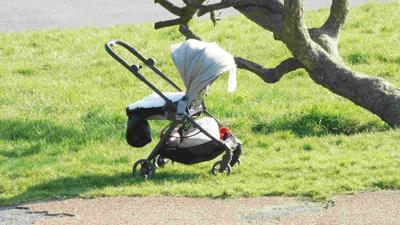
When planning a family hike, it's crucial to focus on easy park trails that are accessible for everyone. These trails often feature hard-packed dirt, crushed gravel, or boardwalks, making them ideal for families with children who have mobility challenges. By choosing the right trails, you can ensure that everyone enjoys the experience.
Imagine a family setting out for a day of hiking, only to be met with the challenge of uneven paths that make the journey difficult for a child with mobility issues. With the right preparation and equipment, these challenges can be transformed into opportunities for memorable family adventures.
Choosing the Right Trails
Researching and selecting the appropriate trail is the first step in creating an inclusive hiking experience. Look for trails that are marked as accessible on park maps, which often indicate accessible routes suitable for an adaptive stroller or adaptive pushchair. These trails are designed to accommodate families with varying mobility needs and support a safe, enjoyable day in nature.
Opt for trails with surfaces like hard-packed dirt, crushed gravel, or boardwalks, which are easier to navigate with an adaptive stroller or medical stroller for kids. Resources like AllTrails provide reviews and detailed descriptions, helping families choose accessible routes with minimal obstacles and ensuring a smooth family hiking adventure.
Additionally, consider the trail's length and complexity. Shorter loops with shaded areas provide opportunities for breaks, helping to maintain energy levels throughout the hike. This thoughtful approach to trail selection, supported by adaptive trail tips, ensures a pleasant outing for all family members.
Pacing and Sensory Planning
Adjusting the pace of your hike can greatly enhance the experience for everyone involved. Choose trails that allow for a comfortable tempo, incorporating frequent micro-breaks to rest and enjoy the surroundings. This pacing strategy is especially beneficial for families with young children or those using a medical stroller for kids.
Sensory planning is another important aspect of preparing for your hike. Some children may benefit from quiet hours or noise-cancelling headphones to manage sensory overload. Bringing along a comfort kit with snacks, water, and familiar toys can also help soothe nerves during breaks. Thoughtful sensory planning helps everyone remain balanced, making the outing smoother and more inclusive.
By addressing sensory needs, you not only enhance individual comfort but also ensure a harmonious group dynamic. When combined with adaptive trail tips, this approach leads to a more enjoyable family hiking experience.
Gear Essentials
The right gear is essential for transforming a simple walk into an extraordinary adventure. When selecting equipment, focus on trail-capable options designed for all-terrain use. Features like pneumatic wheels and suspension systems provide stability and comfort over uneven surfaces, whether using an adaptive pushchair or another supportive device.
A quick-fold stroller design offers convenience during transport and storage, making transitions between locations seamless. Ensure your stroller includes a hand brake and a five-point harness for safety during descents or sudden stops. Families also appreciate the added versatility of a quick-fold stroller when packing vehicles or managing public transport.
At this stage, exploring a lightweight special needs stroller collection can be especially beneficial. These models combine portability with support, ensuring children with mobility challenges remain comfortable while giving parents the flexibility to handle a variety of terrains with ease.
A sun canopy protects from harsh rays while providing shade during breaks. Ample storage options allow you to carry essential items such as snacks or sensory kits without hassle, enabling you to focus on enjoying your time together.
Energy Conservation and Sibling Inclusion
Balancing energy expenditure is key to ensuring everyone enjoys the outing from start to finish. Encourage siblings to participate by sharing responsibilities like carrying lightweight items or leading short segments of the trail.
Promote bonding through shared experiences such as identifying plants or spotting wildlife along the way. This involvement fosters a sense of inclusion and accomplishment among siblings of all abilities.
An inclusive approach not only benefits those requiring additional support but also enriches the experience for every family member involved in the adventure.
Post-Walk Routine
A well-planned post-walk routine helps transition smoothly back home after your adventure. Start by organizing gear efficiently so everything is ready for future outings without unnecessary stress.
Incorporate relaxation techniques such as stretching exercises or quiet time with favorite activities upon returning home. This helps alleviate any residual tension from physical exertion during the hike.
Engage in reflective discussions about highlights from your day out in nature—this strengthens connections within the family unit while building anticipation for future excursions together.


(0) comments
We welcome your comments
Log In
Post a comment as Guest
Keep it Clean. Please avoid obscene, vulgar, lewd, racist or sexually-oriented language.
PLEASE TURN OFF YOUR CAPS LOCK.
Don't Threaten. Threats of harming another person will not be tolerated.
Be Truthful. Don't knowingly lie about anyone or anything.
Be Nice. No racism, sexism or any sort of -ism that is degrading to another person.
Be Proactive. Use the 'Report' link on each comment to let us know of abusive posts.
Share with Us. We'd love to hear eyewitness accounts, the history behind an article.